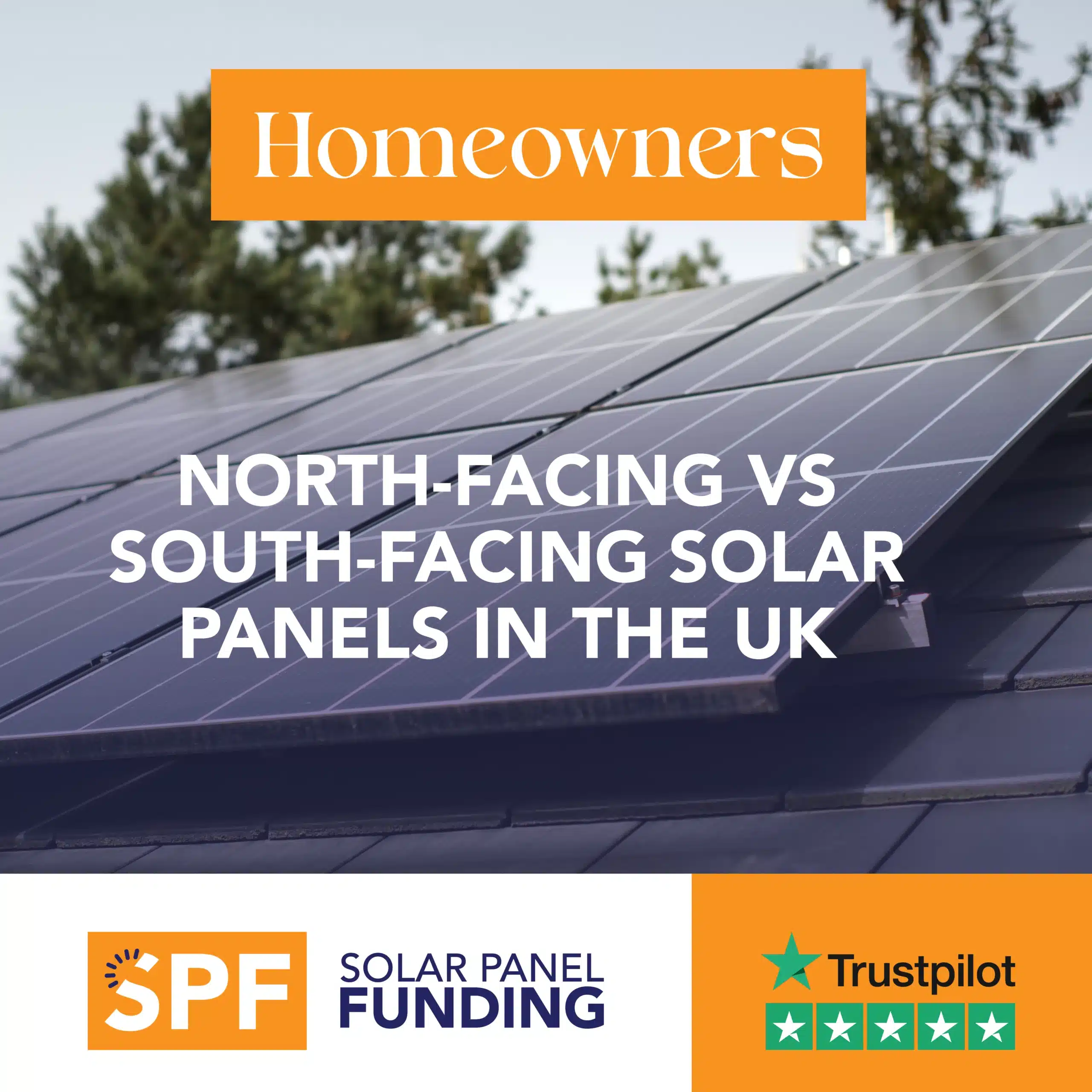
- Are South-facing Solar Panels the Best in the UK?
- Do North-Facing Solar Panels Work?
- How North-Facing Solar Panels Still Generate Energy
- Is It Worth Installing Solar Panels on a North-Facing Roof?
- Alternatives to North-Facing Roof Installations
- In conclusion: North-Facing vs South-Facing Solar Panels
Key Takeaways
☀️ In the UK, south-facing solar panels receive the most sun exposure
🌤 North-facing solar panels receive the least sun exposure
🧭 Still, north-facing panels are around 50–60% as effective as south-facing ones
⚡ East- and west-facing panels can generate strong output too
📈 Solar technology is far more powerful than it was 15 years ago
💡 If your roof isn’t suitable, ground-mounted solar panels could be an option
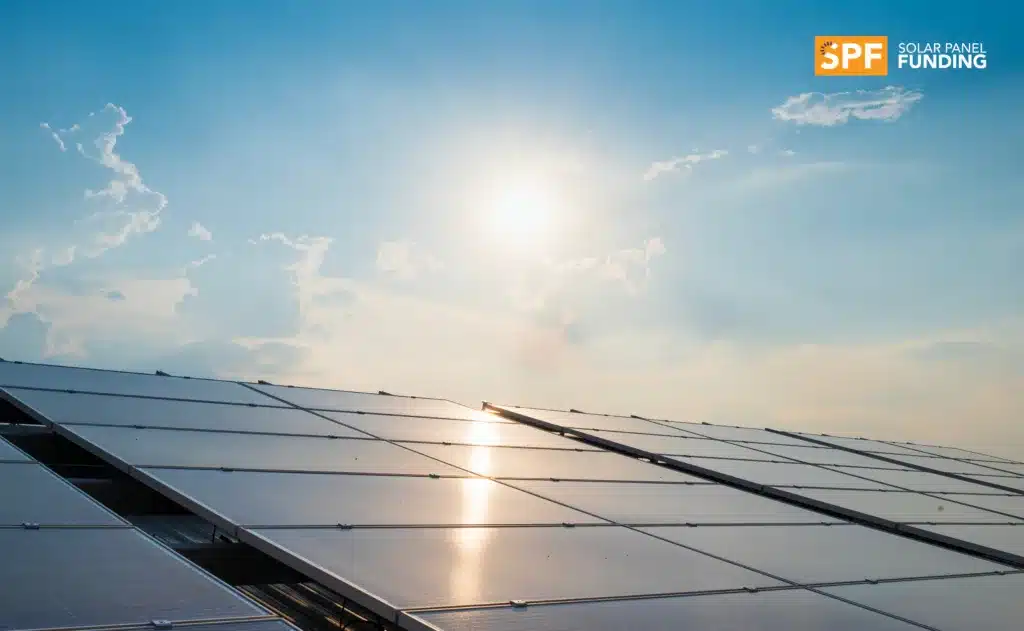
If you live in the UK, south-facing solar panels tend to produce the most electricity. They simply get more hours of direct sunlight.
But that doesn’t mean north-facing panels are a lost cause. Far from it. Thanks to major leaps in solar photovoltaic (PV) technology over the past 20 years, today’s panels are far more efficient and can still generate a surprising amount of energy. No matter the direction they face
In this guide, we’ll break down the differences between north-facing vs south-facing solar panels in the UK, explain how much power they really produce, and help you decide whether a north-facing setup is could still be worth it for your home.
You can easily check how much sunlight your roof gets and how much you could save. Just answer a few quick questions below, and we’ll get back to you with a personalised solar estimate.
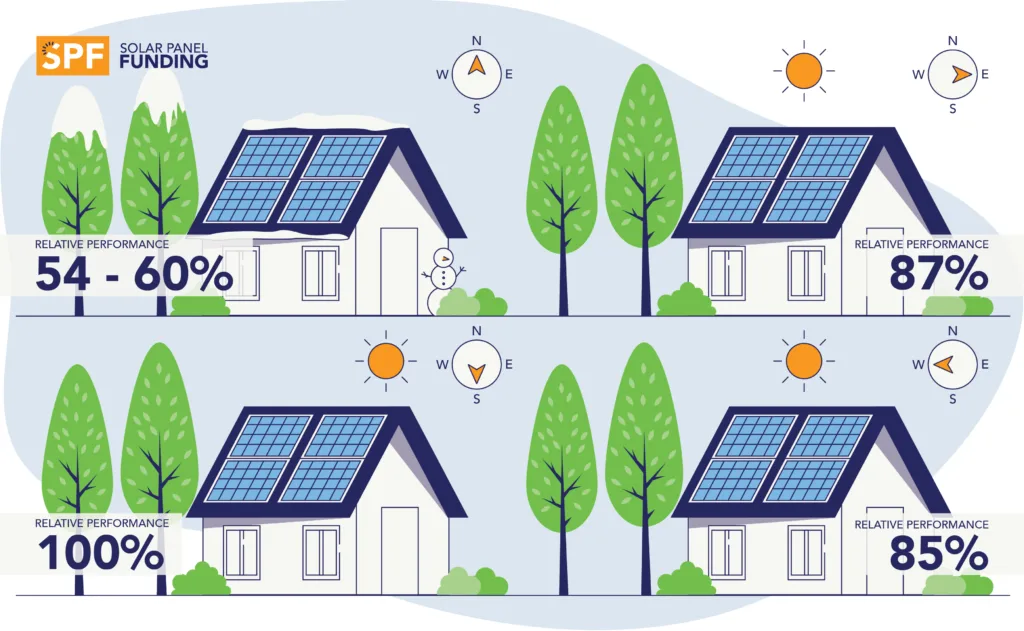
Are South-facing Solar Panels the Best in the UK?
In the UK (and across the northern hemisphere) the sun tracks mainly through the southern sky, which means south-facing solar panels get the most direct sunlight and, naturally, the best energy yield.
It’s all down to simple solar geometry. Because the sun rises in the east and sets in the west, a south-facing roof stays illuminated for the longest part of the day.
The steady exposure means your panels can produce electricity from morning through late afternoon, when household energy use is often highest.
However, the tilt angle of your panels is almost as important as the direction they face. In the UK, the ideal setup usually looks like this:
Best direction: Facing due south (180°)
Best tilt angle: Around 35–40° from horizontal
Why: It aligns with the UK’s latitude, allowing sunlight to hit the panels more directly year-round
A well-angled, south-facing system makes the most of the low winter sun and the higher summer arc, providing steady generation across all seasons.
A typical 3kWp south-facing solar array in the UK can generate around 1,350–1,400 kWh of electricity per year, depending on shading, roof pitch, and location.
That’s the benchmark for efficiency, but the good news is that east- and west-facing systems aren’t far behind. Their output only drops by about 10–15%, making them excellent alternatives if your south-facing roof space is limited or shaded.
| Orientation | Approx. Annual Output (3kWp system) | Relative Performance |
|---|---|---|
| South-facing | 1,361 kWh | 100% |
| East-facing | 1,178 kWh | 87% |
| West-facing | 1,153 kWh | 85% |
| North-facing | 1,145 kWh | 54–60% |
Do North-Facing Solar Panels Work?
Yes, north-facing solar panels absolutely work, though they generate less electricity than south-facing ones.
In the UK, north-facing systems typically produce around 54–60% as much energy as panels facing true south. For a standard 3kWp system, that’s roughly 1,145 kWh per year, compared with about 1,361 kWh from a south-facing setup.
So, while the difference is noticeable, it’s far from a dealbreaker. Especially with modern high-efficiency solar panels that can turn even soft, indirect light into usable energy.
At Solar Panel Funding, our trusted installer partners consider every aspect of your roof (including pitch, shading, and direction) to design a system that gives you the best possible return.
And if it makes sense to include panels on the north side, they’ll make sure it’ll work efficiently as part of your setup.
How North-Facing Solar Panels Still Generate Energy
Even when they’re not in direct sunlight, solar panels don’t stop working. That’s because photovoltaic (PV) cells absorb both direct and indirect light (also known as diffuse radiation).
Indirect light is sunlight scattered by clouds, air molecules, and nearby surfaces like buildings, water, or the ground.
This scattered light reaches your panels from all directions, allowing them to keep generating electricity even without direct exposure to the sun.
And thanks to modern high-efficiency solar panels, that indirect light goes a lot further than it used to.
Over the past 15–20 years, solar panels have become dramatically more powerful and efficient, producing more energy even in low-light conditions:
Early 2010s: average residential panel output ~290W, efficiency around 14%
Today: panels often exceed 450–500W, with efficiencies of 20–25%
Is It Worth Installing Solar Panels on a North-Facing Roof?
On their own, north-facing solar panels usually aren’t the most cost-effective option. Their output is lower than south-, east-, or west-facing panels, meaning it can extend your system’s payback period by around three to four years.
That said, when they’re part of a larger solar array that includes other orientations, north-facing panels can be a smart addition. They help you capture more daylight overall, especially when your south roof is shaded or unsuitable for installation.
When north-facing solar panels make sense
North-facing solar panels can be well worth it when:
✅ You’re installing panels on multiple roof sections (e.g. south + north, or east + west).
✅ Your south-facing roof is shaded, small, or structurally unsuitable.
✅ You’re fitting a solar battery, to store power generated during sunnier hours.
✅ You want to maximise total system size to offset more of your electricity usage.
✅ You’re already paying fixed installation costs (like scaffolding, labour, or inverter setup).
When comparing quotes, it’s worth asking your installer to include north-facing panels in your system design. This lets you see how they affect total cost, annual output, and ROI before making your decision.
Wondering how much you’ll need to invest in a solar & battery system? Just answer a few quick questions below, and we’ll check if you qualify for solar funding.
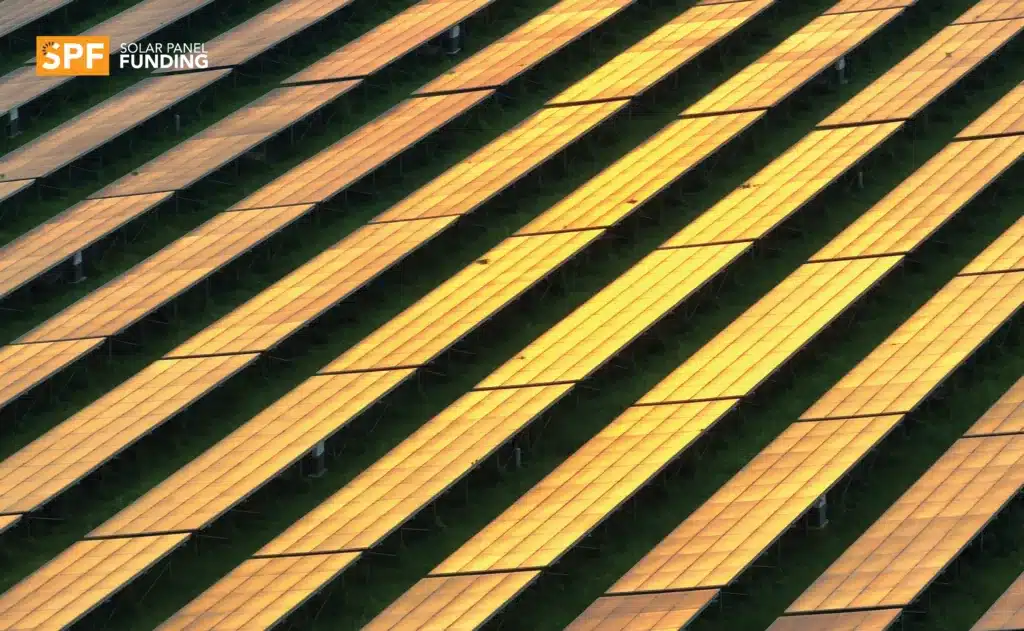
Alternatives to North-Facing Roof Installations
If your roof doesn’t face south (or if it’s shaded, limited in space, or structurally unsuitable) you still have great solar options. While roof-mounted panels are the most common, alternative mounting systems can deliver excellent efficiency and flexibility.
1. Ground-mounted solar panels
Ground-mounted systems are fixed into the ground using a sturdy racking structure, usually positioned just above ground level. They’re often seen on solar farms, but they work brilliantly for homes with enough open space, too.
Key benefits:
- Can be angled and oriented perfectly for maximum sunlight
- Easier to clean, maintain, and expand than roof systems
- Ideal for properties with limited or shaded roof space
Considerations:
Slightly higher installation cost due to mounting and groundwork
2. Shed-mounted solar panels
If your main roof isn’t suitable, shed-mounted solar panels can be a clever workaround, especially for smaller systems or when you just want to top up your generation.
Key benefits:
- Makes use of outbuildings or garden sheds
- Cost-effective way to supplement your main solar array
- Allows flexible south-facing positioning
Considerations:
- Shed structure must be strong enough to hold panels safely
Both options allow you to position panels exactly south-facing, ensuring top performance even if your house roof faces north.
In conclusion: North-Facing vs South-Facing Solar Panels
| Factor | South-Facing | North-Facing |
|---|---|---|
| Sun exposure | Highest | Lowest |
| Annual energy yield | Up to 100% | ~54–60% |
| Payback time | Shorter | 3–4 years longer |
| Works with indirect light | ✅ | ✅ |
| Recommended for UK homes | ✅ | Only if south not available or as add-on |
Bottom line:
If you have the choice, go with south-facing panels. If you don’t, modern solar panels still make north-facing systems a viable, worthwhile investment, especially when paired with battery storage or a mixed orientation setup.
While south-facing solar panels remain the top performers, north-facing panels are no longer a dealbreaker. Advances in efficiency, low-light performance, and smart system design mean that almost any roof can now support a cost-effective solar setup.
Do UK solar panels have to be south-facing?
No. There’s no law or regulation. South-facing is simply the most efficient orientation in the northern hemisphere.
How much less efficient are north-facing panels?
Roughly 40–50% less energy output compared with south-facing ones, depending on pitch, shading, and location.
Can east- or west-facing panels work well?
Yes. They generate roughly 85–90% of a south-facing system’s output, often providing steadier generation across morning and evening.
Can I combine north and south-facing panels?
Absolutely. A split east-west or north-south array can increase your overall generation window and reduce grid reliance.
What’s the best tilt angle for UK panels?
Around 35–40°, roughly matching your location’s latitude, for maximum year-round output.

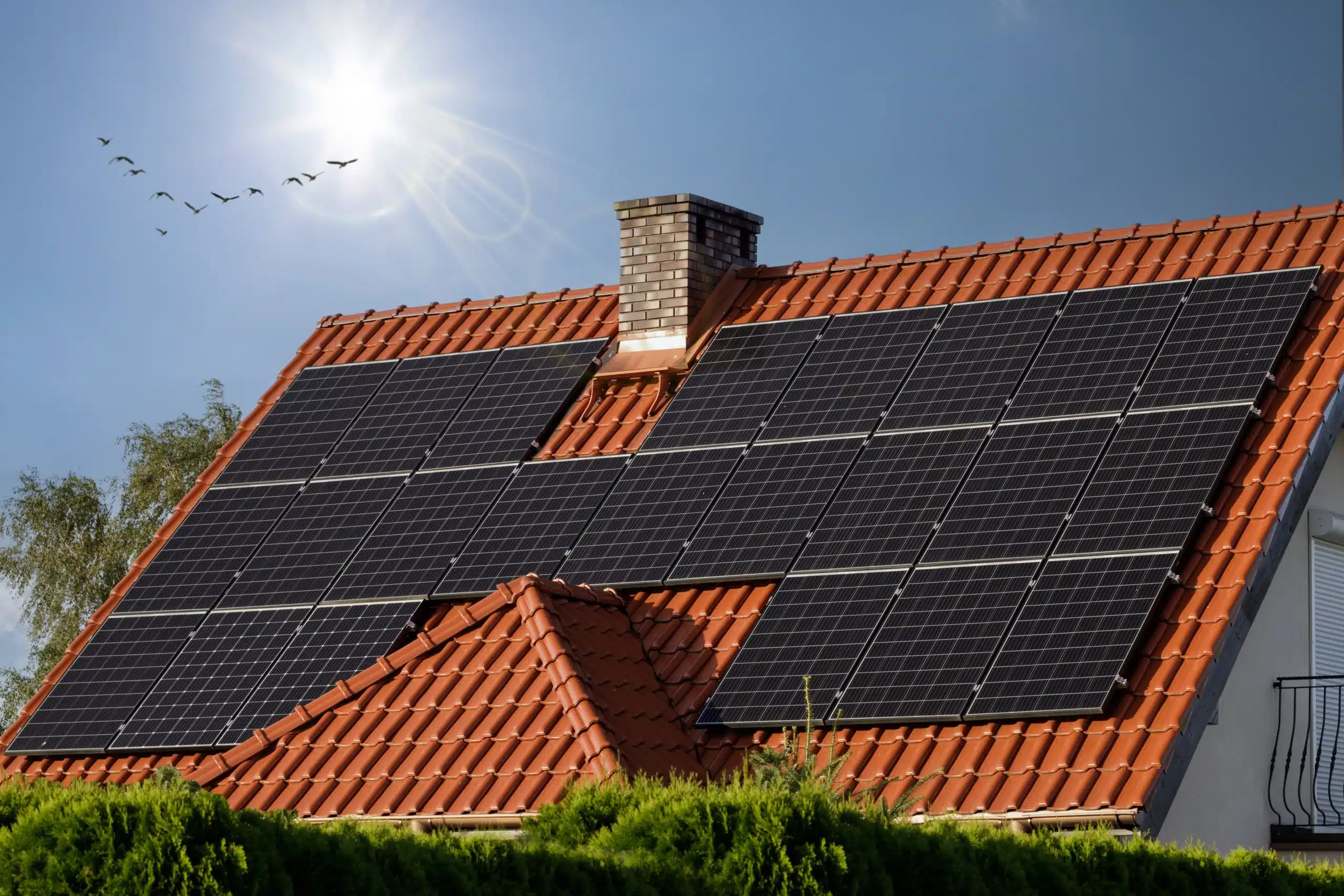


![Can You Fit Solar Panels on a Flat Roof in the UK? [2025] 7 can you fit solar panels on a flat roof in the uk](https://www.solarpanelfunding.co.uk/wp-content/uploads/2025/10/Blog_Can-You-Fit-Solar-Panels-on-a-Flat-Roof-in-the-UK-1024x1024.webp)